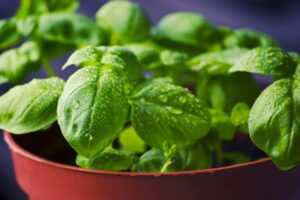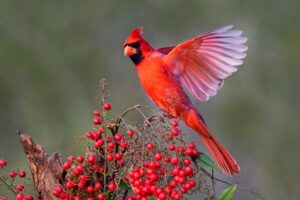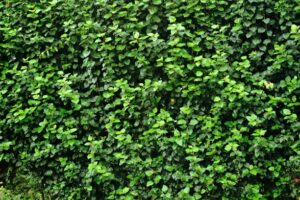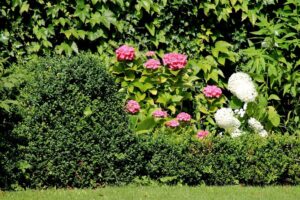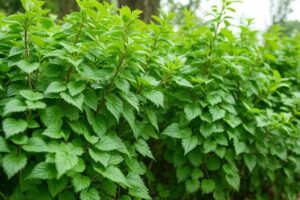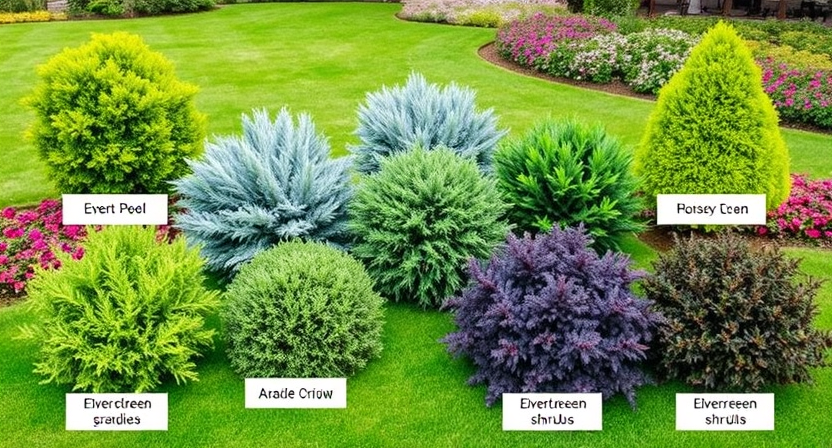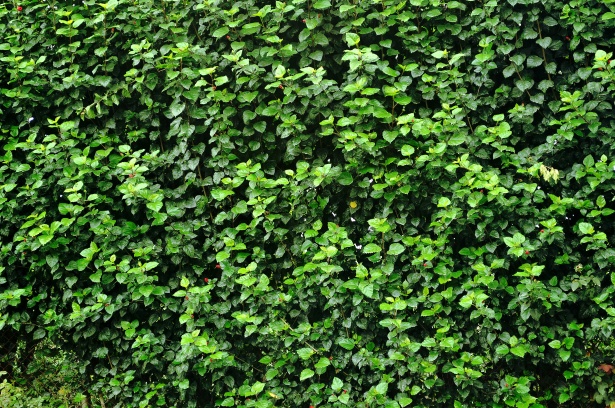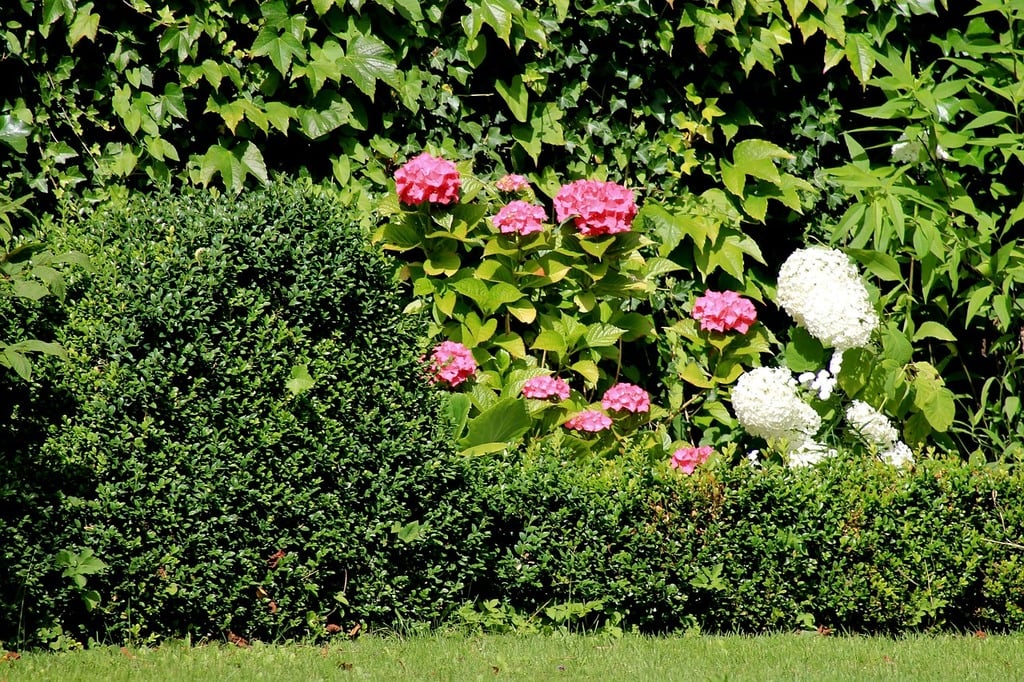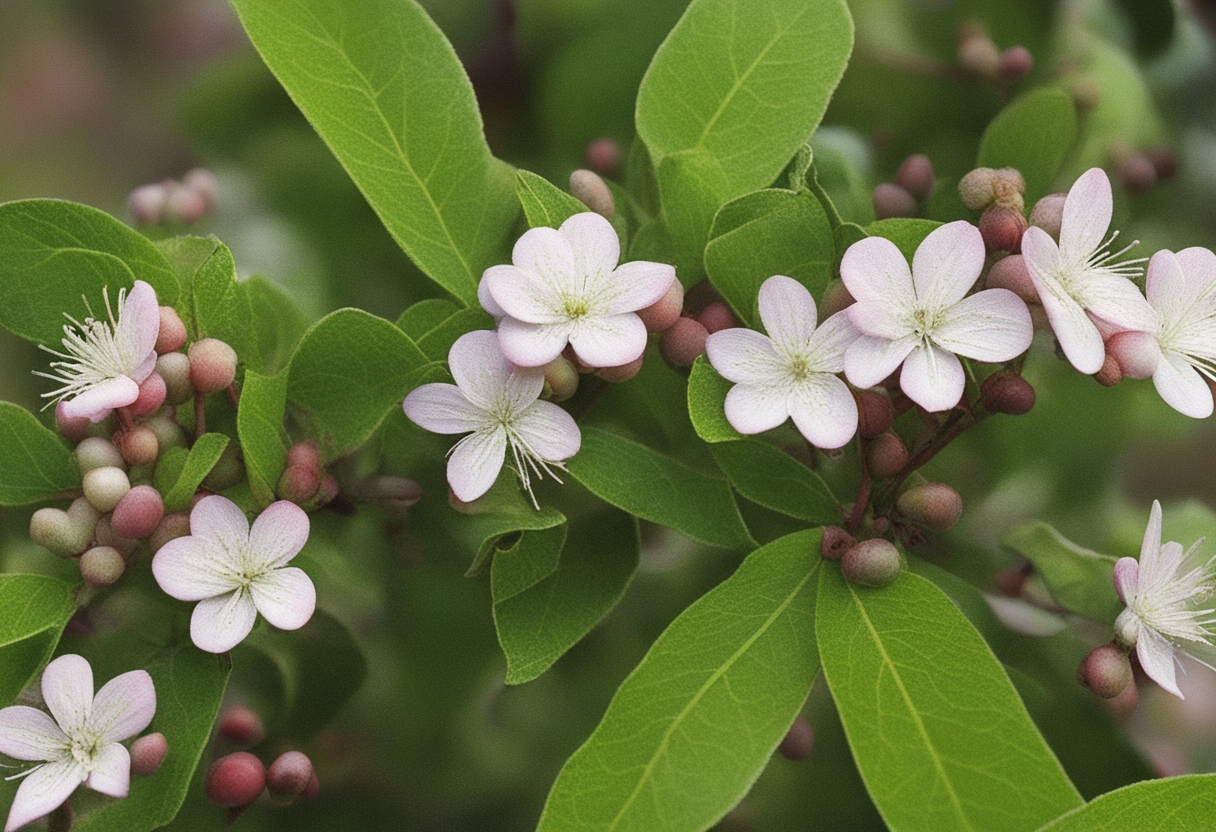Juniper: Drought-tolerant shrubs with striking needle-like foliage

Junipers are an excellent choice for those seeking drought-tolerant shrubs that can withstand dry conditions. With their striking needle-like foliage, they add an interesting texture and visual appeal to any garden or landscape. These evergreen shrubs come in a variety of shapes, sizes, and colors, making them versatile options for different design styles.
One of the advantages of junipers is their ability to thrive in harsh environments with limited water availability. They have adapted to survive in arid regions, making them a great choice for gardeners who want low-maintenance plants that can withstand periods of drought. Their needle-like foliage helps to reduce water loss through transpiration, enabling them to conserve moisture and endure dry conditions. Whether used as a ground cover, in rock gardens, or as accent plants, junipers can create a stunning visual impact while requiring minimal watering.
• Junipers are drought-tolerant shrubs that can withstand dry conditions
• They have striking needle-like foliage, adding texture and visual appeal to gardens or landscapes
• Evergreen shrubs come in various shapes, sizes, and colors, making them versatile for different design styles
• Junipers thrive in harsh environments with limited water availability
• Adapted to survive in arid regions, making them low-maintenance plants for gardeners
• Needle-like foliage helps reduce water loss through transpiration, conserving moisture during drought periods
• Can be used as ground cover, in rock gardens, or as accent plants
• Create a stunning visual impact while requiring minimal watering.
Azalea: Showy flowers and vibrant colors to brighten up your garden

Azaleas are renowned for their beautiful flowers and vibrant colors, making them a popular choice for gardeners looking to add a burst of color to their outdoor spaces. With a wide range of hues available, including shades of pink, purple, red, and white, azaleas can easily complement any garden design. These showy flowers can brighten up even the dullest of spaces, injecting life and vibrancy into the landscape.
In addition to their stunning flowers, azaleas are also known for their attractive foliage. The glossy, dark green leaves provide a beautiful backdrop to the colorful blooms, creating a visually appealing contrast. Whether planted individually as a focal point or grouped together in a mass planting, azaleas can transform any garden into a captivating and picturesque haven.
• Azaleas are renowned for their beautiful flowers and vibrant colors.
• They come in a wide range of hues including pink, purple, red, and white.
• Azaleas can easily complement any garden design.
• Their showy flowers can brighten up even the dullest of spaces.
• The glossy, dark green leaves provide a beautiful backdrop to the colorful blooms.
• Whether planted individually or grouped together, azaleas can transform any garden into a captivating haven.
Factors to Consider When Choosing Evergreen Shrubs

Climate suitability is a vital factor to consider when selecting evergreen shrubs for your garden. Each type of shrub has specific temperature and moisture requirements for optimal growth and survival. Therefore, it is crucial to choose shrubs that are suitable for your particular climate. Researching the hardiness zones and average annual temperatures in your area can help you determine which evergreen shrubs are best suited for your garden.
Another important consideration is the soil requirements of the shrubs you intend to plant. Different evergreen shrubs thrive in different soil conditions, including soil pH, drainage, and nutrient levels. It is essential to evaluate the soil quality in your garden and select shrubs that can adapt to those conditions. Some evergreen shrubs, for example, prefer well-draining soil, while others can tolerate clay or sandy soil. By understanding the soil requirements of the shrubs, you can ensure their successful growth and health in your garden.
• Climate suitability is a crucial factor to consider when choosing evergreen shrubs for your garden.
• Each type of shrub has specific temperature and moisture requirements for optimal growth and survival.
• Researching the hardiness zones and average annual temperatures in your area can help you determine which evergreen shrubs are best suited for your garden.
• Soil requirements are another important consideration when selecting evergreen shrubs.
• Different shrubs thrive in different soil conditions, including pH, drainage, and nutrient levels.
• Evaluating the soil quality in your garden is essential before choosing suitable shrubs.
• Some evergreen shrubs prefer well-draining soil, while others can tolerate clay or sandy soil.
Climate suitability: Ensure the shrubs are suitable for your specific climate

When choosing evergreen shrubs for your garden, it is crucial to consider the climate suitability of the plants. Different shrubs have varying tolerance to extreme temperatures, humidity levels, and other environmental factors. It is essential to ensure that the shrubs you select are suitable for your specific climate, whether it is hot and dry, cold and snowy, or somewhere in between. This will give you the best chance of success in growing healthy and thriving evergreen shrubs in your garden.
Choosing shrubs that are well-suited to your climate will help them withstand the challenges posed by weather conditions. For instance, if you live in an area with hot and dry summers, it is advisable to opt for drought-tolerant shrubs like juniper. These shrubs have adapted to survive in arid conditions and can withstand extended periods without much water. On the other hand, if you reside in a region with snowy winters, you might consider selecting evergreen shrubs that are cold-hardy, like certain varieties of azaleas. This way, you can ensure that your shrubs will thrive and provide year-round beauty in your garden.
• Consider the climate suitability of evergreen shrubs for your specific region
• Choose shrubs that can tolerate extreme temperatures and humidity levels
• Ensure the selected shrubs are suitable for hot and dry climates or cold and snowy climates
• Opt for drought-tolerant shrubs like juniper for hot and dry regions
• Select cold-hardy evergreen shrubs like certain varieties of azaleas for snowy winters
• By choosing climate-appropriate shrubs, you increase the chances of successful growth in your garden.
Soil requirements: Understanding the soil conditions necessary for optimal growth

When selecting evergreen shrubs for your garden, it is crucial to consider the soil requirements necessary for their optimal growth. Different shrubs have varying preferences for soil type, texture, pH levels, and drainage. Understanding these soil conditions will help you choose the right shrubs that will thrive in your garden.
Some evergreen shrubs, such as junipers and azaleas, prefer well-drained soil with a slightly acidic pH. These shrubs thrive in loamy or sandy soil that provides good drainage, preventing waterlogged roots which can lead to rot and other plant health issues. On the other hand, some shrubs like hollies and rhododendrons prefer slightly acidic to neutral soil with a higher organic content. They will benefit from the addition of compost or organic matter to improve the soil’s structure and nutrient levels. By paying attention to the specific soil requirements of each shrub, you can create a healthy and thriving garden that showcases the beauty of these evergreen plants.
• Different evergreen shrubs have varying preferences for soil type, texture, pH levels, and drainage
• Understanding the soil conditions will help in selecting the right shrubs for optimal growth
• Junipers and azaleas prefer well-drained soil with a slightly acidic pH
• Loamy or sandy soil with good drainage is ideal for these shrubs to prevent waterlogged roots
• Hollies and rhododendrons prefer slightly acidic to neutral soil with higher organic content
• Adding compost or organic matter can improve the structure and nutrient levels of the soil
Sunlight needs: Selecting shrubs that thrive in your garden’s sunlight exposure

Shrubs are a versatile addition to any garden, bringing beauty and structure to the landscape. When selecting shrubs for your garden, it is important to consider their sunlight needs. Different shrubs have varying requirements for sunlight exposure, and choosing the right ones for your garden’s specific conditions can make all the difference in their growth and overall health.
Some shrubs thrive in full sun, requiring at least six hours of direct sunlight each day. These sun-loving shrubs include popular options like roses, lavender, and butterfly bush. On the other hand, there are also shrubs that prefer shady or partially shaded areas. These shade-loving shrubs, such as hydrangeas, ferns, and hostas, can add a lush and cool element to your garden. By understanding the sunlight needs of different shrubs, you can create a harmonious garden that will flourish in its specific light conditions.
• Sun-loving shrubs require at least six hours of direct sunlight each day
• Examples of sun-loving shrubs include roses, lavender, and butterfly bush
• Shade-loving shrubs prefer shady or partially shaded areas
• Shade-loving shrubs can add a lush and cool element to your garden
• Examples of shade-loving shrubs include hydrangeas, ferns, and hostas
Size and growth habits: Choosing shrubs that fit your desired space and style

One important factor to consider when selecting evergreen shrubs for your garden is their size and growth habits. It’s essential to choose shrubs that fit well within the available space and complement the overall style of your garden.
Firstly, consider the mature size of the shrubs. Some varieties can grow quite tall and wide, while others remain compact and suitable for smaller spaces. Be sure to check the ultimate size of the shrub before making a decision, as overcrowding can hinder their growth and lead to a messy appearance. Additionally, consider the growth rate of the shrub. Some species may grow rapidly, requiring frequent pruning to maintain their desired shape, while others remain more slow-growing and low-maintenance.
Secondly, think about the overall habit of the shrubs. Some varieties have an upright habit, creating a striking vertical element in your garden. Others have a spreading or cascading habit, perfect for adding a touch of elegance to steep slopes or hanging baskets. Consider the architectural style of your garden and how different growth habits can enhance or detract from its overall design.
Choosing evergreen shrubs that fit your desired space and style is crucial for creating a harmonious and visually appealing garden. By taking into account the mature size and growth habits of the shrubs, you can ensure that they will thrive and enhance the overall aesthetics of your outdoor space.
• Consider the mature size of the shrubs to avoid overcrowding and maintain a neat appearance.
• Check the growth rate of the shrub to determine if it requires frequent pruning or is low-maintenance.
• Think about the overall habit of the shrubs, such as upright, spreading, or cascading, to enhance your garden’s design.
• Take into account your garden’s architectural style and how different growth habits can complement or detract from it.
• Choosing evergreen shrubs that fit your desired space and style will create a harmonious and visually appealing garden.
Maintenance requirements: Assessing the level of care needed for each shrub

When selecting evergreen shrubs for your garden, it is important to consider the maintenance requirements of each variety. Some shrubs may need frequent pruning to maintain their desired shape and size, while others may require minimal care. Assessing the level of care needed for each shrub will help you choose plants that align with your gardening abilities and time availability.
Certain evergreen shrubs may have specific maintenance needs, such as regular watering, fertilizing, or protection from extreme temperatures. Understanding these requirements will ensure that you can provide the necessary care for your chosen shrubs to thrive in your garden. Additionally, consider factors such as the amount of time you are willing to dedicate to pruning, deadheading, or monitoring for pest and disease issues. By carefully assessing the maintenance requirements of each shrub, you can create a garden that is not only visually appealing but also manageable and enjoyable to care for.
• Some evergreen shrubs may need frequent pruning to maintain their shape and size
• Others may require minimal care
• Assessing the level of care needed for each shrub will help you choose plants that align with your gardening abilities and time availability
• Certain evergreen shrubs may have specific maintenance needs, such as regular watering, fertilizing, or protection from extreme temperatures
• Understanding these requirements will ensure that you can provide the necessary care for your chosen shrubs to thrive in your garden
• Consider factors such as the amount of time you are willing to dedicate to pruning, deadheading, or monitoring for pest and disease issues
Pest and disease resistance: Opting for shrubs that are less prone to issues

Incorporating shrubs into your garden comes with its fair share of challenges, including the potential for pests and diseases to take hold. To minimize the risk of these issues, it is important to select shrubs that are naturally resistant or less prone to such problems. By choosing shrubs with built-in defenses, you can ensure a healthier and more vibrant garden.
When it comes to pest resistance, certain shrubs have natural deterrents that help fend off unwanted insects. These plants produce compounds that are unappealing to pests, making them less likely to be targeted. Additionally, some shrubs have thorny or spiky foliage that can discourage pests from reaching the leaves. The level of pest resistance may vary among different shrub species, so it’s essential to research and choose varieties that are known to have stronger resistance to pests prevalent in your area. This proactive approach to pest resistance can significantly reduce the need for chemical interventions and promote a more eco-friendly gardening experience.
• Some shrubs produce compounds that repel pests
• Certain shrubs have thorny or spiky foliage to deter pests
• Research and choose shrub varieties with stronger resistance to local pests
• Proactive pest resistance reduces the need for chemical interventions
• Promotes a more eco-friendly gardening experience
Design Ideas for Incorporating Ever

Evergreen shrubs are versatile and can be used in various design ideas to enhance the overall aesthetic of your garden. One popular way to incorporate evergreen shrubs is by creating a hedge or a boundary around your garden. Not only does this provide privacy, but it also adds structure and defines the boundaries of your outdoor space. You can choose different types of evergreen shrubs with varying heights and shapes to create a visually appealing and cohesive hedge.
Another design idea is to use evergreen shrubs as focal points in your garden. Placing a single evergreen shrub as a centerpiece in a flower bed or near a seating area can create a visually striking focal point. The beauty of evergreen shrubs lies in their year-round foliage, ensuring that your garden remains vibrant, even during the colder months. Additionally, you can incorporate different varieties of evergreen shrubs to add texture and depth to your garden design.
• Creating a hedge or boundary around your garden using evergreen shrubs provides privacy and adds structure to your outdoor space.
• Choose different types of evergreen shrubs with varying heights and shapes to create a visually appealing and cohesive hedge.
• Use evergreen shrubs as focal points in your garden by placing them as centerpieces in flower beds or near seating areas.
• The year-round foliage of evergreen shrubs ensures that your garden remains vibrant even during colder months.
• Incorporate different varieties of evergreen shrubs to add texture and depth to your garden design.



